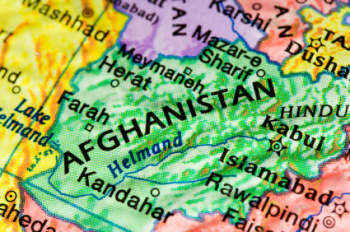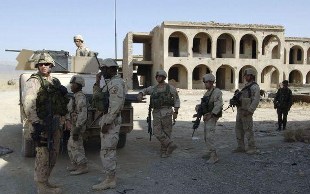When NATO began its invasion of the Marjah farming region, the general consensus among analysts was that the offensive, the single largest operation since the 2001 invasion of Afghanistan against a relatively anonymous little town in the middle of nowhere, was mostly a “PR” invasion to sell the continued to an increasingly skeptical Western public.
 But it is increasingly clear that wasn’t the whole story. Officials are now making it very plain that the invasion of Marjah was a “test” of a new strategy, that will be put into practice on a much larger scale with the invasion of Kandahar.
But it is increasingly clear that wasn’t the whole story. Officials are now making it very plain that the invasion of Marjah was a “test” of a new strategy, that will be put into practice on a much larger scale with the invasion of Kandahar.
The Marjah invasion was far from the runaway success officials promised, but it appears to have been “good enough” from their perspective, and it seems that it will be used more or less unchanged in Kandahar. But the lacking strategy will run into more problems than just transitioning from the invasion of a farming region of 80,000 to a city of nearly a million people.
The Marjah invasion saw around 15,000 troops invade and enormous influx of police aimed at “holding” the region. It also drove around a third of the population into refugee camps around Lashkar Gah. But it was invading a region that was more or less a blank slate, having never had a NATO military presence nor a presence of the Karzai government.
Kandahar, on the other hand, has been the center of a lot of violence since the NATO invasion, and has been torn by numerous corruption scandals surrounding the Karzai government’s police, and Karzai’s brother Wali. Kandahar’s residents will be under no illusions that the offensive will solve its serious corruption problems.
 In contrast to Marjah, which was mostly built up in the 1960s by American investors to showcase modern agricultural techniques, Kandahar has enormous historical and cultural significance to the Taliban. It was the site where Mullah Omar founded the movement, and will probably see much more fierce resistance.
In contrast to Marjah, which was mostly built up in the 1960s by American investors to showcase modern agricultural techniques, Kandahar has enormous historical and cultural significance to the Taliban. It was the site where Mullah Omar founded the movement, and will probably see much more fierce resistance.
It is unclear when the offensive will start, but amassing tens of thousands of troops for a push into the city will likely take months, putting the attack likely in late spring to early summer. This will give the Taliban plenty of time to prepare, even more than they had in Marjah, and will likely create a much larger refugee problem as one of the nation’s largest cities is transformed into a battlefield.


